Last month the big news from space was all about manned spaceflight. After all Space X had successfully launched its second manned mission to the International Space Station (ISS) just a matter of days after the ISS had celebrated its twentieth year of continuous occupation.
This month’s post on the other hand is going to be all about the robots who are exploring space and in particular two robotic missions that have just returned bearing with them samples of material from other worlds. This material will soon be analyzed in labouratories here on Earth in order to reveal some of the secrets of what the other bodies in our solar system are like. Another big difference between this post and the last is that whereas the construction and operation of the ISS has primarily been a US and Russian show the two nations who built, launched and operated the two robotic space probes were those two far eastern powers Japan and China.


I’ll start with Japan’s Hayabusa 2 probe because it was the first to leave Earth back in December of 2014 on its mission to the asteroid Ryugu. I’ve written about Hayabusa and its mission to Ryugu several times, see my posts of 27Nov2019, 20Apl2019, 6Mar2019 and 30Jun2018. Arriving at Ryugu in 2018 after a voyage of 300 million kilometers Hayabusa spent more than a year studying the space rock. During that time the robot dropped several small landers onto the asteroid’s surface, fired a copper projectile at Ryugu in order to dig a crater that allowed the main spacecraft to land and collect samples from beneath the asteroid’s surface.
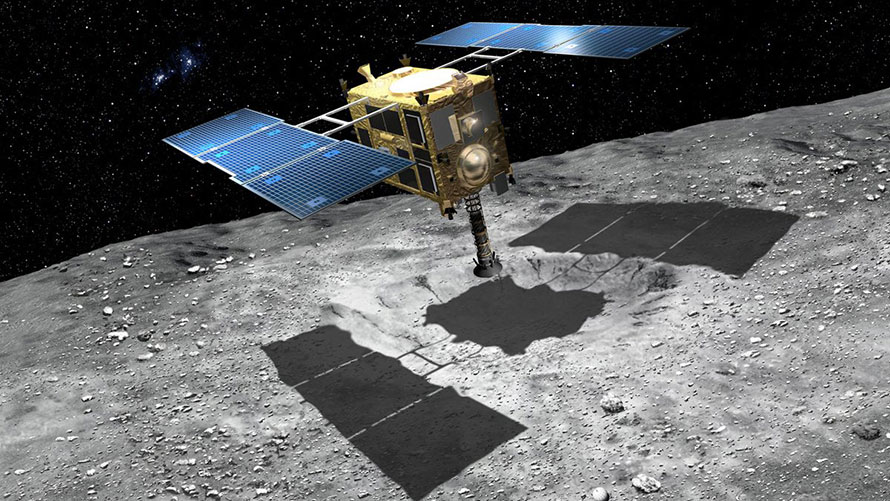
Then in November of 2019 Hayabusa fired its rockets and began the return journey to Earth. As the main spacecraft skimmed past our planet on December 6th, it released a small 40cm in diameter capsule that contained the samples it had collected from Ryugu. That capsule reentered our atmosphere and deployed a parachute bringing it to a soft landing in the Woomer Prohibited Area of the Australian state of South Australia. Members of the Japanese Space Agency JAXA quickly found the capsule, declaring that the priceless cargo was in perfect shape and that the probe had brought back at least 100mg of material from Ryugu.
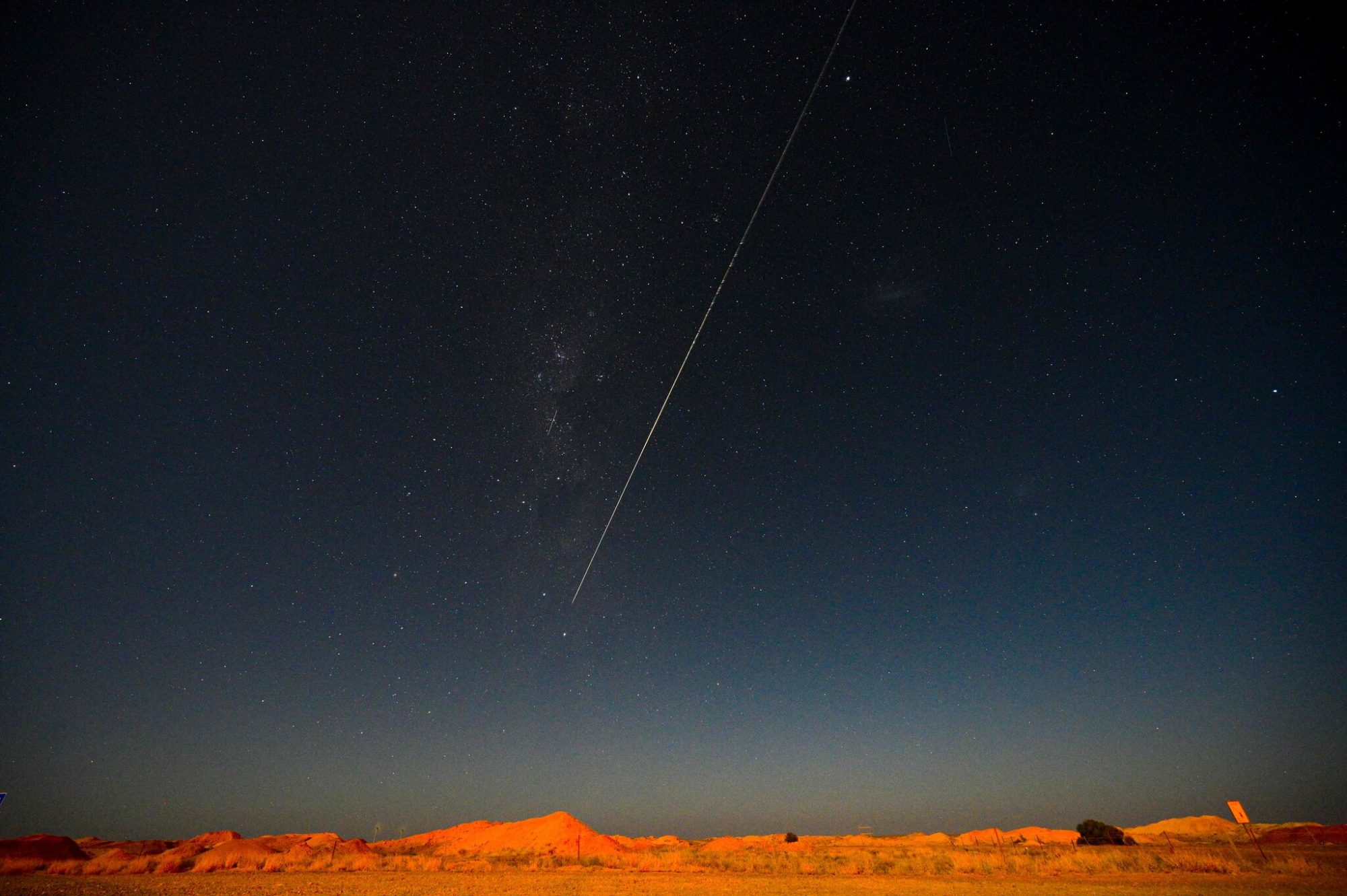
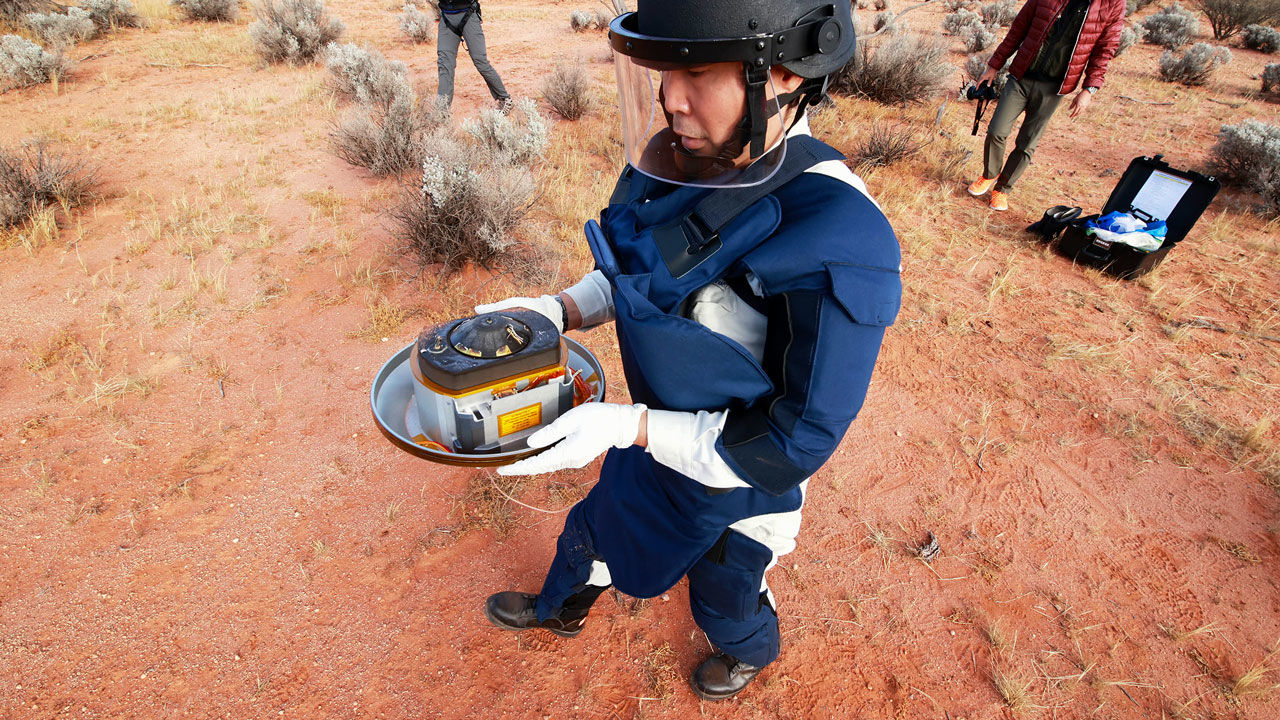
As for the Hayabusa 2 probe itself, well it used Earth’s gravity to give it a velocity boost and it’s now on its way to another asteroid, one named 1998KY26. That will be another ten year journey but I think Hayabusa 2 is up for the challenge.
And if you think the mission of Hayabusa 2 was complex, well China’s Chang’e 5 robot mission went a step or two farther with an orbiter, lander, rover to gather samples, a blast off from the surface and docking in orbit. All that before a final return journey to Earth with the collected samples. To be honest the Chinese do have the advantage that the Chang’e 5’s target wasn’t 300 million kilometers away, it was right next door, the Moon.
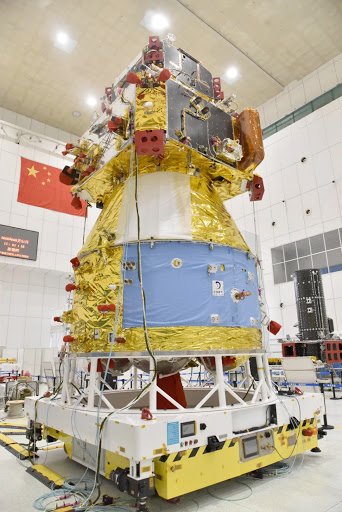
Building on the success of their Chang’e 4 lander and rover, which made the first ever landing on the lunar far side, the Chang’e 5 spacecraft was launched on November 24th from the Wenchang space facility on the Island of Hainan. Entering lunar orbit the landing module then detached from the orbiter and on December 1st the lander touched down in the Moon’s Ocean of Storms region at a volcanic area known as Mons Rümker.
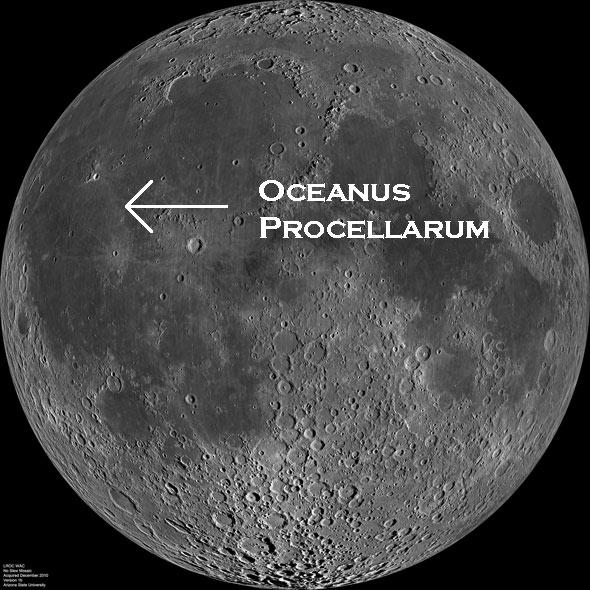
The lander then deployed a small rover, which was equipped with a scoop for the collection of as much as 2kg of lunar ‘regolith’. After spending two days, two Earth days that is, collecting and photographing the area around the lander the rover transferred its bounty to the lander’s ascent stage. Then on December 3rd the ascent stage blasted off carrying the samples with it and reached lunar orbit where it rendezvoused with the waiting orbiter.
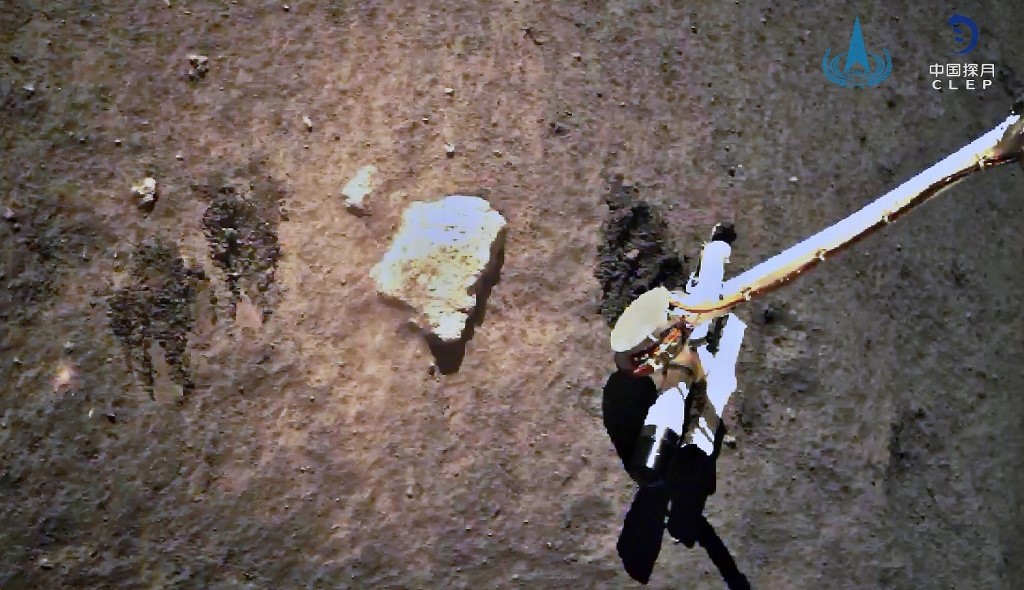
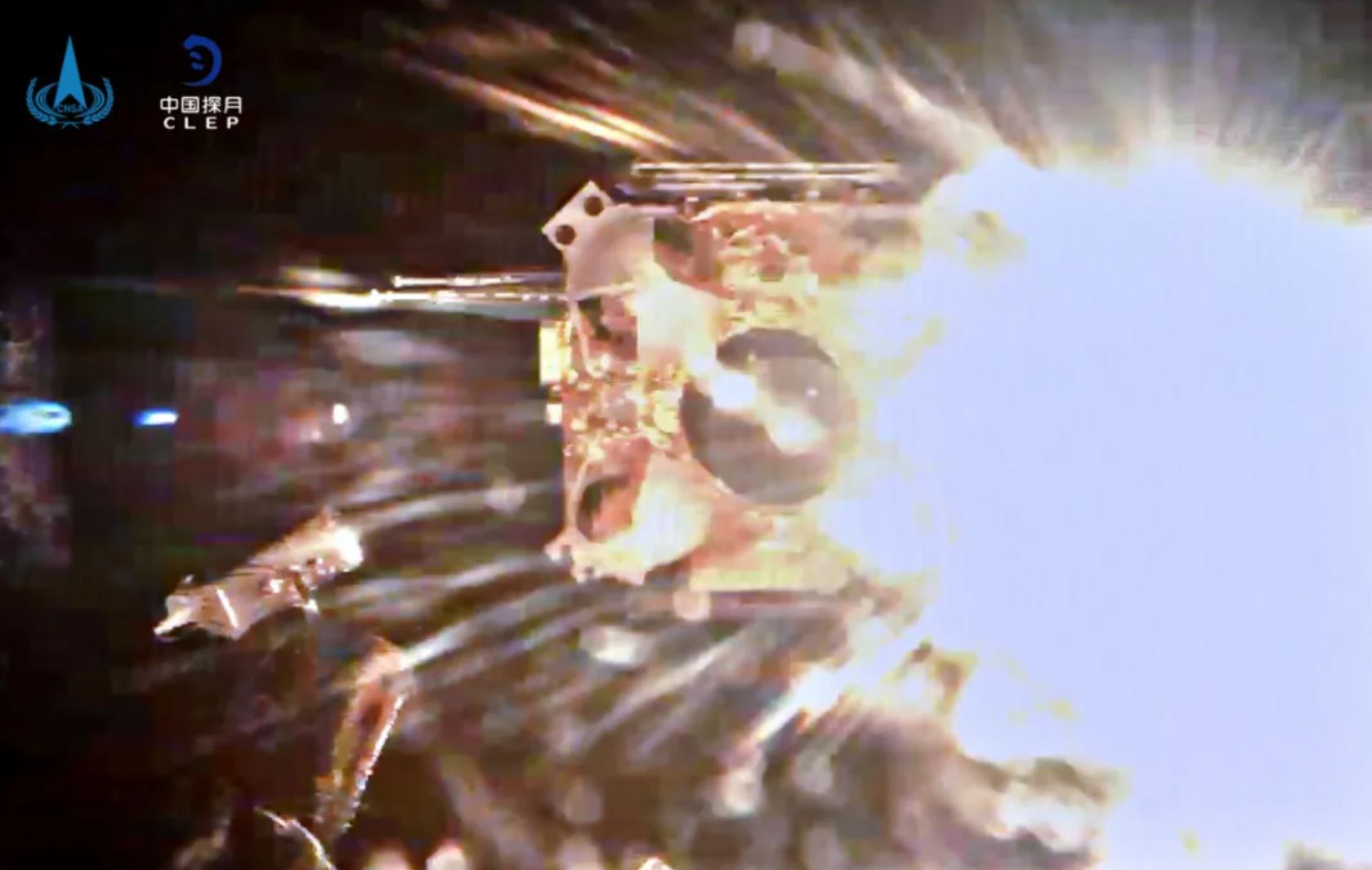
The two spacecraft then successfully completed the first robotic rendezvous and docking in lunar orbit. Once docked the canister containing the lunar material was transferred from the ascent stage to the orbiter. With its job completed the ascent stage was jettisoned and ordered to crash back into the Moon’s surface in the central highlands region on December 7th. The orbiter then waited for a narrow launch window to open so that it could begin its return to Earth.
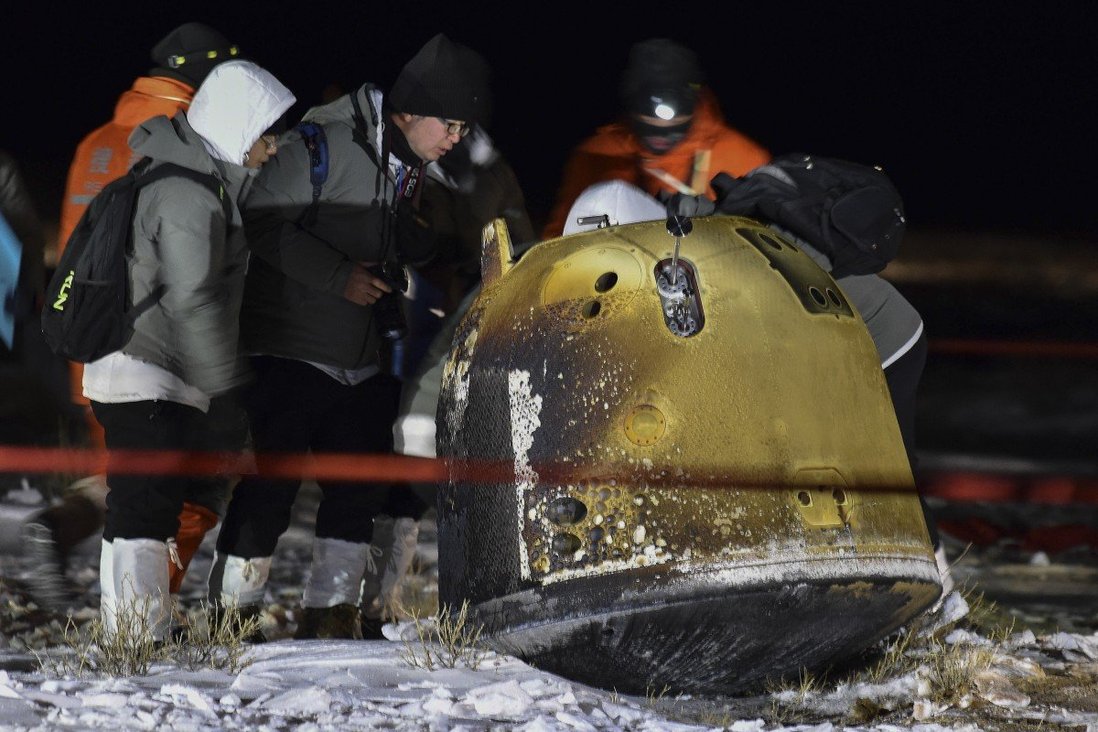
Firing its engine on the 13th of December set the recovery capsule on a three day journey back to Earth. Finally, on Wednesday the 16th the capsule entered our atmosphere, slowed its speed by air friction before releasing a parachute. At about 3AM local time the capsule came safely to the ground in the Siziwang district of China’s Inner Mongolian region. Following a transmitted radio beacon scientists with China’s space program quickly located the capsule and within hours it was on a airplane bound for a labouratory in Beijing where it will be opened up and its precious cargo removed.
So in the space of less than a month robotic probes have brought back to Earth material samples of two different celestial bodies. In the long debate over whether humans or robots should explore space this month the robots won. Of course the debate isn’t over yet, it still has a long way to go!
